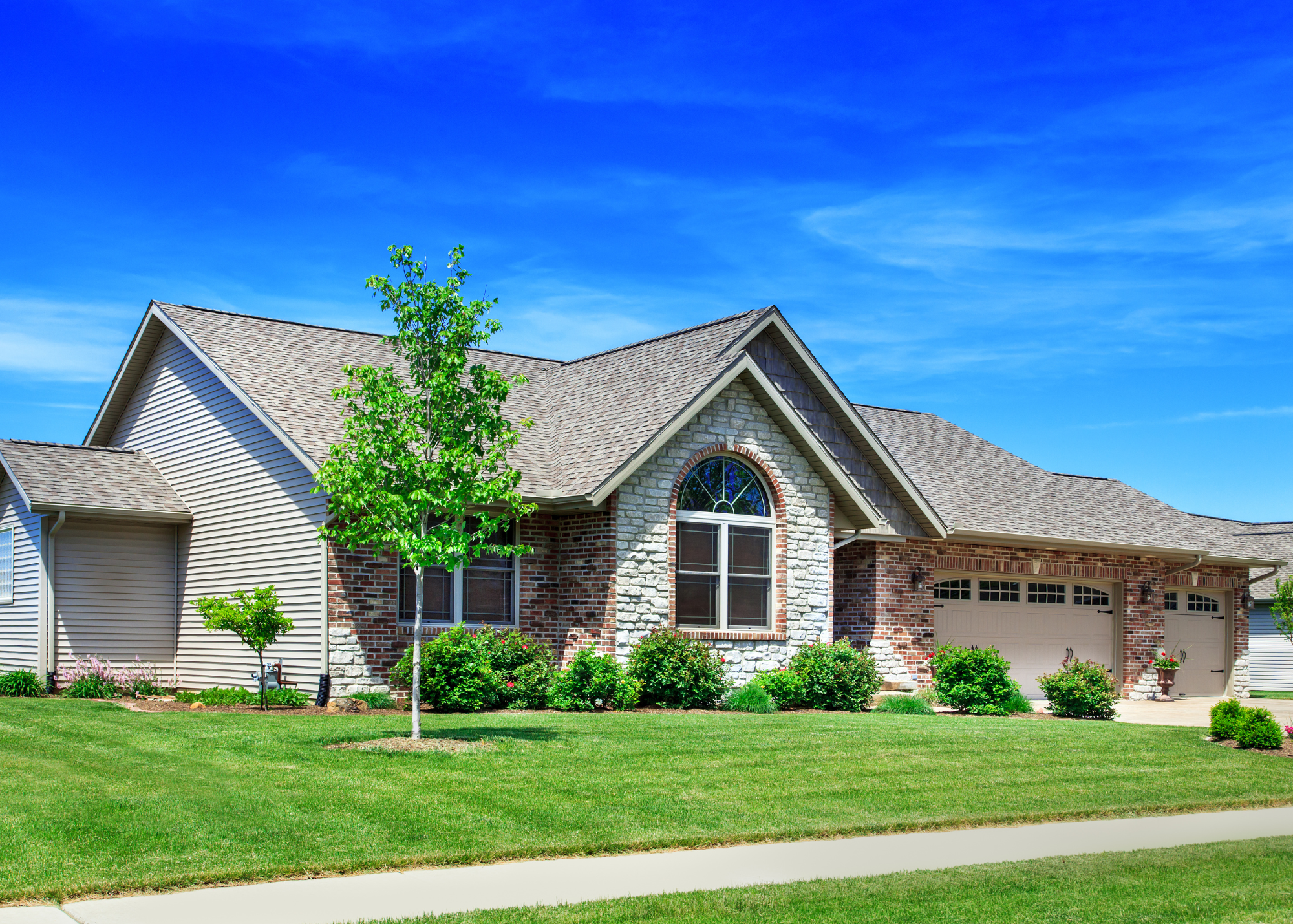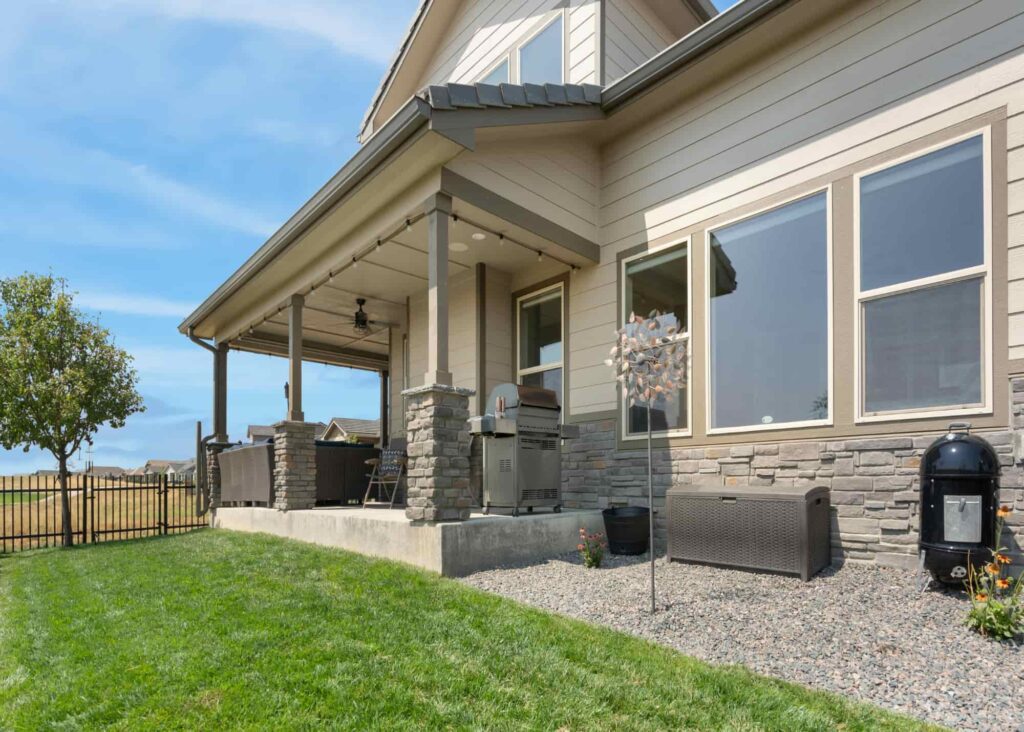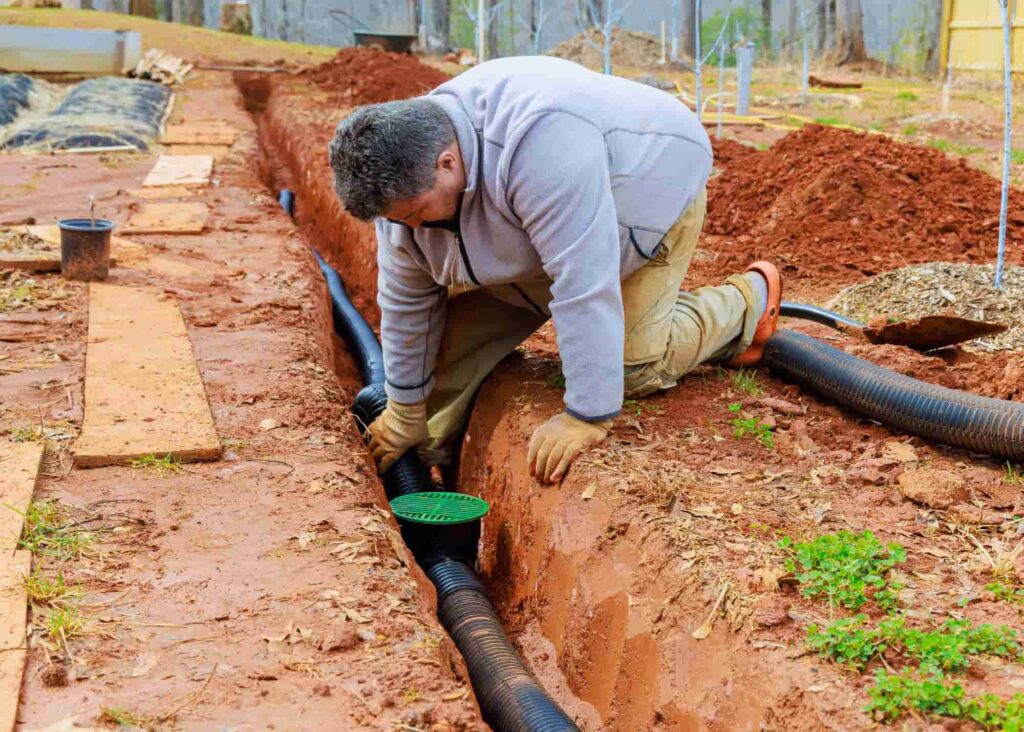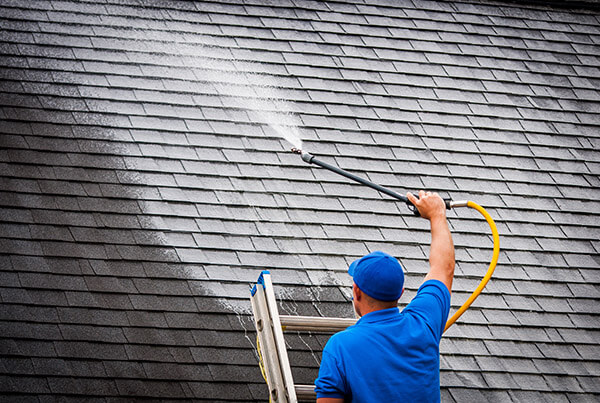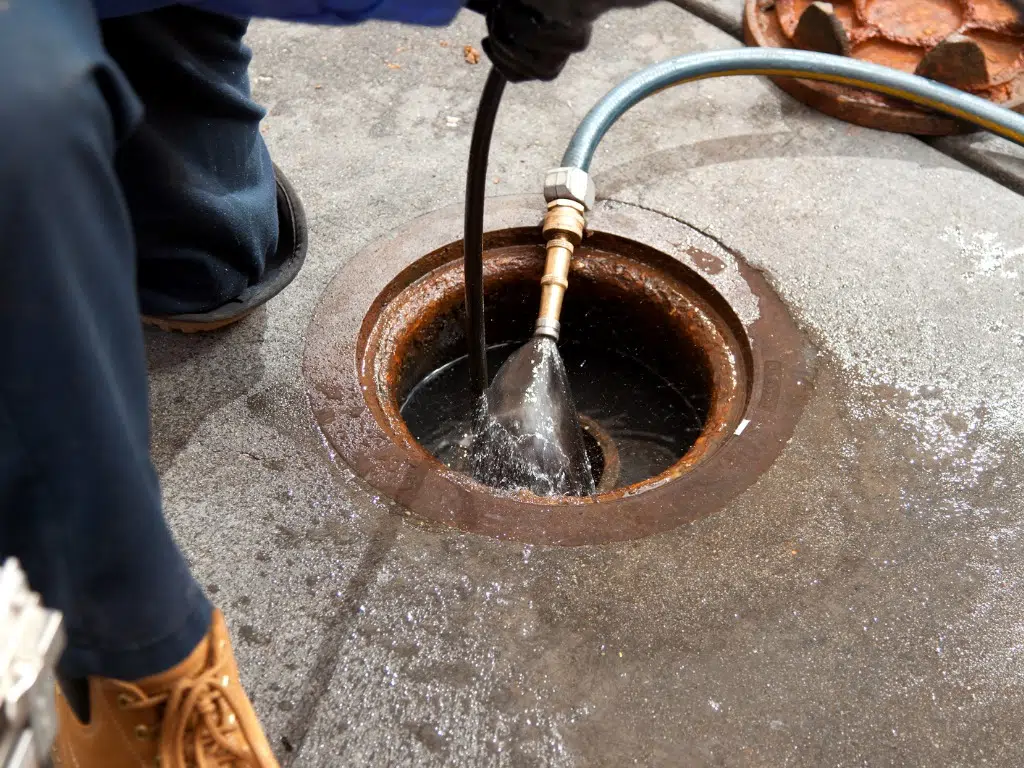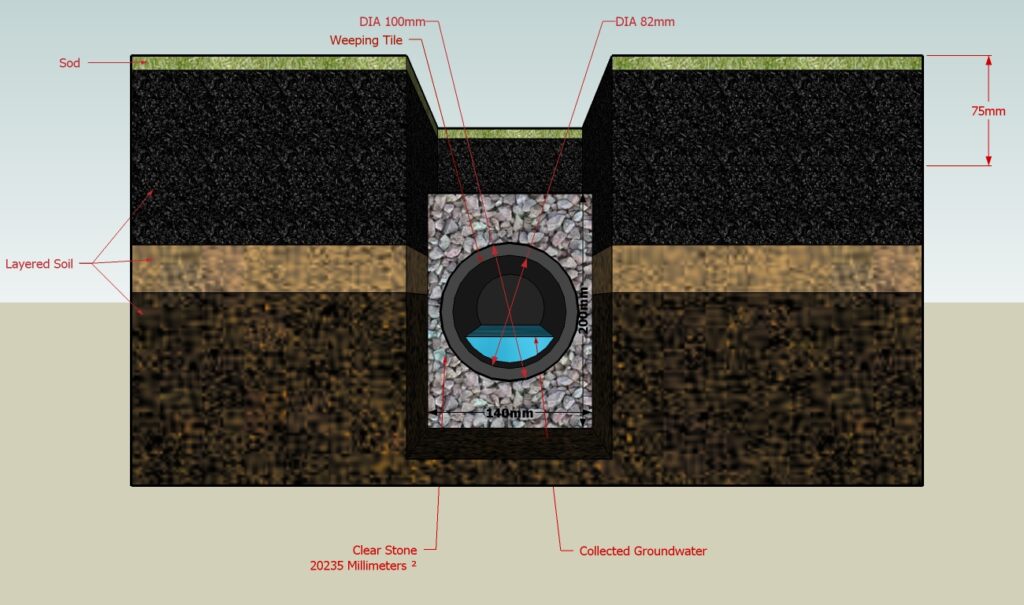Homeowners deserve to take pride in healthy, thriving yards. Your property is often your greatest investment, and a sanctuary where you can create years of great memories with loved ones.
You should be able to fully enjoy your property without the threat of water damage and the numerous expensive issues it can cause. The difference between a water-logged eyesore and a beautiful home often boils down to your yard drainage system. Ineffective drainage can lead to standing water in your yard, basement flooding, unhealthy mold, and more.
Installing a perimeter drain may be the right step to protect your home from excess water, clogged drains, and other challenges. Here’s all you need to know about perimeter drains so that you can make an informed decision about adding a perimeter drain system to your property.
What is a perimeter drain?
A perimeter drain is a yard drainage system that can be installed around the exterior or interior perimeter of your home’s foundation. A perimeter drain system collects and diverts excess water from structures on your property.
This type of drainage system prevents damage to your foundation, basement flooding, and structural infiltration of excess water. A perimeter drain can be installed on a wide variety of properties, but is especially effective in regions that experience heavy rainfall.
If you experience consistent issues with groundwater or surface water accumulating in standing pools near your home’s foundation, installing a perimeter drain might be a wise choice.
How does a perimeter drain work?
A perimeter drain utilizes perforated PVC or plastic pipes placed in deep trenches around the perimeter of your foundation. Pipes are strategically placed at a subtle slope to promote water flow. It’s then covered with porous gravel that fills the trench and allows water to travel through the surface and into the perforations in the pipe.
The gravel can enhance your landscape and acts as a filter to keep debris and dirt from clogging the pipe. Water seeps through the gravel and into the pipe and is diverted away from your foundation to a drainage area or a sump pump.
If you have basement flooding issues, installing an interior perimeter drain can prevent excess water that seeps inside from ruining your foundation. An exterior perimeter drain is installed at the base of your home’s foundation.
Maintenance needed for a perimeter drain
A perimeter drain is a long-lasting, cost-effective drainage solution that rarely requires maintenance. The average perimeter drain lasts at least 10 years, but after decades of use, may require replacement or repair.
If you notice any of the following, you may need to consider utilizing professional drainage services:
- Blockage:
If you notice standing water beginning to pool after rainfall, your perimeter drain may be experiencing blockage. You should spot check any surface drainage points to ensure they’re cleared of dirt and debris.
If your drainage points are unclogged but you’re still experiencing issues, you might want to call professional yard drainage experts to access the buried drainage pipe. The right professional team may be able to flush your system.
If you hired great drainage specialists to install your system, maintenance might be included in your drainage package.
- Broken or cracked tiles:
A perimeter drain installed on an older property might include clay or concrete “weeping” tiles that cover your drainage system. As these tiles age, they can break and crack, and fill with dirt and debris.
You may notice drainage issues if this occurs, and can replace clay and concrete tiles with plastic weeping tiles.
- Disconnection from drainage points:
Perimeter drains are often connected to your local sewer system or to sump pumps installed on your property. Over time, a perimeter drain can become disconnected from drainage points or experience backups and clogging.
If you suspect your drain has disconnected from a sewer system, call your local drainage experts to perform maintenance.
Benefits of installing a perimeter drain
Installing a perimeter drain provides multiple benefits for your property and protects your home’s foundation from significant water damage. Some of the major benefits offered by a perimeter drain system include:
- Basement Flooding Prevention:
Both exterior and interior perimeter drains protect your basement from flooding after heavy rain or snow as they divert water away from your foundation.
- Improved Air Quality:
Musty odors and mold spores won’t have a chance to overpower your home if it remains dry. A perimeter drain can improve your overall interior air quality.
- Increased Property Value:
A perimeter drain can help keep your property dry and free from structural damage. If you choose to sell your home, installing a perimeter drain can increase the value of your property.
- Protection from Mold and Mildew:
Perimeter drains can keep your basement and crawl space dry, which protects you from hazardous mold and mildew growth that can significantly impact your health.
- Reduced Utility Costs:
A damp home can leave you with soaring utility bills as your thermostat works harder to heat or cool your home. A perimeter drain system can keep your property dry and reduce your utility costs.
- Reduced Risk of Pest Infestation:
A damp basement or yard is a perfect breeding ground for mosquitos, termites, and other pests. A perimeter drain greatly reduces the risk of insect infestation.
- Structural Integrity:
A perimeter drain helps maintain the structural integrity of your home as it greatly reduces threats to your property’s foundation. This also saves you significant costs on home repairs due to severe water damage.
Types of perimeter drains
Perimeter drains are effective drainage solutions that can be installed both outside (around your foundation’s perimeter) and inside your home (in your basement). There are three main types of perimeter drains — here’s a brief explanation of each type.
Footing Drains
Footing drains are installed at the base of your foundation and intercept groundwater seepage from infiltrating your foundation and oversaturating your healthy soil. A footing drain system consists of perforated pipes laid in gravel-filled trenches, often covered with a draining filter fabric that prevents debris and dirt from entering the pipe system.
A footing drain diverts groundwater that can cause foundational cracks, basement leaks, and structural integrity issues.
French Drains
The French drain is one of the most popular and widely installed drainage systems. When installed as a perimeter drain, this system surrounds your home’s foundation.
A French drain diverts excess water away from buildings on your property and includes perforated pipes that run underneath deep trenches and redirect water flow.
The trenches of a French drain system are filled with gravel or other absorbent elements such as porous rocks or mulch.
Weeping Tiles
“Weeping tiles” are also known as drain tiles, and are often the existing drainage system of old homes. Modern weeping tile perimeter drains consist of a pipe system covered with plastic tiles, but older systems used clay and concrete tiles.
Weeping tiles can be used as exterior perimeter drains, and when used as interior basement perimeter drains, they are referred to as French drains. Similar to the footing drain, this system is installed at the base of a foundation’s perimeter. Weeping tiles collect and divert water away from your property’s foundation.
When should you install a perimeter drain?
If you’re building a new home or moving into a home with a basement and crawl space, you should consider installing a perimeter drain. An effective drainage system can greatly reduce flooding risks and keep your property dry.
It’s easier to take preventative measures against water damage than to repair significant issues after they arise. However, if you experience basement flooding, water stains, mildew and musty odors, warped floorboards, or other signs of water damage, it may be time to consider installing an interior perimeter drain.
Similarly, if your home is in an area prone to heavy rainfall, a perimeter drain system can add enhanced property protection.
Excellent and experienced drainage specialists can determine which type of perimeter drain would work best for your unique properties and install an effective drainage system that can save you from the costly consequences of water damage.
Founded in Naperville, Illinois over twenty years ago, family-owned and operated Ware Landscaping is dedicated to offering premium drainage and landscaping solutions for our Chicago area neighbors. We can help you create and maintain the yard of your dreams!
Connect with us with any questions you may have about perimeter drains, and check out our website to explore our comprehensive services.

